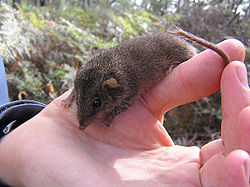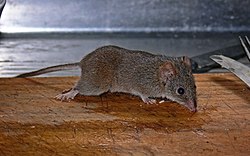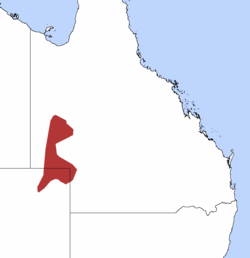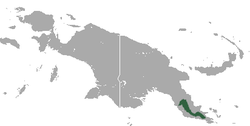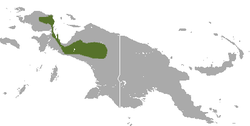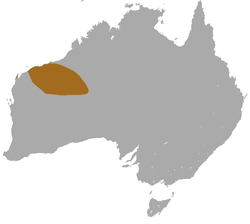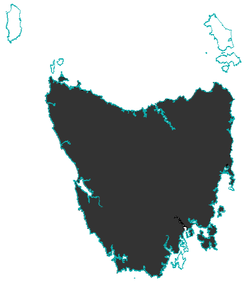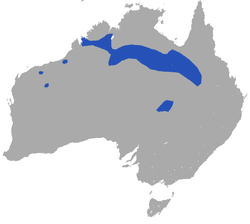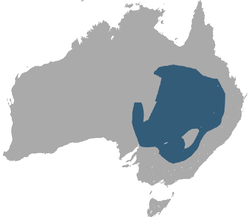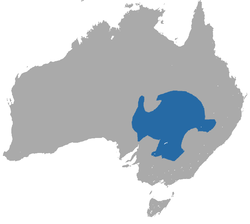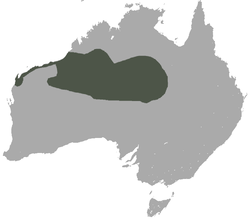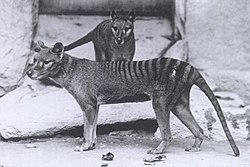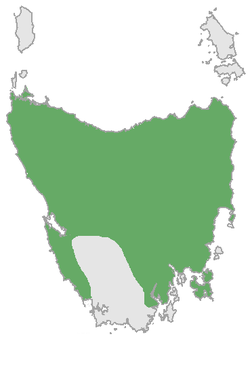| Common name | Scientific name and subspecies | Range | Size and ecology | IUCN status and estimated population |
|---|
| Carpentarian dunnart  | S. butleri
Archer, 1979 | Northern Australia
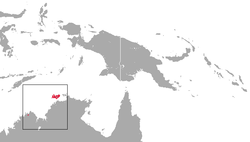 | Size: 4–14 cm (2–6 in) long, plus 4–13 cm (2–5 in) tail [94]
Habitat: Forest and shrubland [95]
Diet: Insects, as well as small vertebrates such as lizards and mice [96] | VU
20,000  [95] [95]
|
|---|
| Chestnut dunnart
| S. archeri
Dyck, 1986 | Northern Australia and southern New Guinea
 | Size: 4–14 cm (2–6 in) long, plus 4–13 cm (2–5 in) tail [94]
Habitat: Forest and savanna [97]
Diet: Insects, as well as small vertebrates such as lizards and mice [96] | DD
Unknown  [97] [97]
|
|---|
| Fat-tailed dunnart 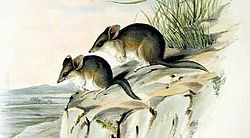 | S. crassicaudata
(Gould, 1844) | Australia
 | Size: 6–11 cm (2–4 in) long, plus 5–12 cm (2–5 in) tail [98]
Habitat: Savanna, shrubland, grassland, and desert [99]
Diet: Grasshoppers, moths, and beetles [98] | LC
Unknown  [99] [99]
|
|---|
| Gilbert's dunnart  | S. gilberti
Kitchener, Stoddart, Henry, 1984 | Southwestern Australia
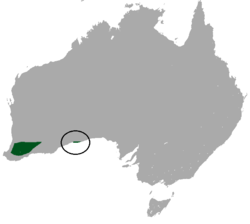 | Size: 4–14 cm (2–6 in) long, plus 4–13 cm (2–5 in) tail [94]
Habitat: Forest and shrubland [100]
Diet: Insects, as well as small vertebrates such as lizards and mice [96] | LC
Unknown  [100] [100]
|
|---|
| Grey-bellied dunnart
| S. griseoventer
Kitchener, Stoddart, Henry, 1984 | Southwestern Australia
 | Size: 4–14 cm (2–6 in) long, plus 4–13 cm (2–5 in) tail [94]
Habitat: Forest, shrubland, and inland wetlands [101]
Diet: Insects, as well as small vertebrates such as lizards and mice [96] | LC
Unknown  [101] [101]
|
|---|
| Hairy-footed dunnart
| S. hirtipes
Thomas, 1898 | Western central Australia
| Size: 4–14 cm (2–6 in) long, plus 4–13 cm (2–5 in) tail [94]
Habitat: Forest, savanna, shrubland, and grassland
Diet: Insects, as well as small vertebrates such as lizards and mice [96] | LC
Unknown 
|
|---|
| Julia Creek dunnart
| S. douglasi
Archer, 1979 | Northeastern Australia
 | Size: 4–14 cm (2–6 in) long, plus 4–13 cm (2–5 in) tail [94]
Habitat: Savanna, shrubland, and grassland [103]
Diet: Insects, as well as small vertebrates such as lizards and mice [96] | NT
20,000  [103] [103]
|
|---|
| Kakadu dunnart
| S. bindi
Dyck, Woinarski & Press, 1994 | Northern Australia
 | Size: 4–14 cm (2–6 in) long, plus 4–13 cm (2–5 in) tail [94]
Habitat: Forest, savanna, and grassland [104]
Diet: Insects, as well as small vertebrates such as lizards and mice [96] | NT
9,000–100,000  [104] [104]
|
|---|
| Lesser hairy-footed dunnart  | S. youngsoni
McKenzie, Archer, 1982 | Western and central Australia
| Size: 4–14 cm (2–6 in) long, plus 4–13 cm (2–5 in) tail [94]
Habitat: Shrubland, grassland, and desert
Diet: Insects, as well as small vertebrates such as lizards and mice [96] | LC
Unknown 
|
|---|
| Little long-tailed dunnart  | S. dolichura
Kitchener, Stoddart, Henry, 1984 | Southwestern Australia
 | Size: 4–14 cm (2–6 in) long, plus 4–13 cm (2–5 in) tail [94]
Habitat: Forest, savanna, shrubland, and grassland [106]
Diet: Insects, as well as small vertebrates such as lizards and mice [96] | LC
Unknown  [106] [106]
|
|---|
| Long-tailed dunnart
| S. longicaudata
Spencer, 1909 | Western Australia
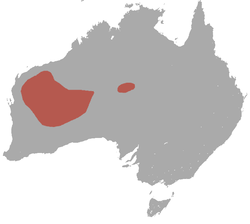 | Size: 8–10 cm (3–4 in) long, plus 18–21 cm (7–8 in) tail [107]
Habitat: Shrubland, grassland, and rocky areas [108]
Diet: Insects and arthropods, as well as lizards, mice, and other small vertebrates [107] | LC
Unknown  [108] [108]
|
|---|
| Ooldea dunnart
| S. ooldea
Troughton, 1965 | Western central Australia
 | Size: 4–14 cm (2–6 in) long, plus 4–13 cm (2–5 in) tail [94]
Habitat: Savanna, shrubland, grassland, and desert [109]
Diet: Insects, as well as small vertebrates such as lizards and mice [96] | LC
Unknown  [109] [109]
|
|---|
| Red-cheeked dunnart  | S. virginiae
de Tarragon, 1847
- S. v. nitela
- S. v. rufigenis
- S. v. virginiae
| Northern Australia and southern New Guinea
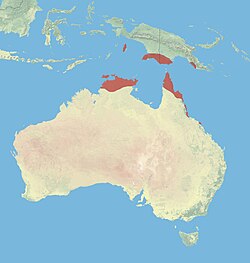 | Size: 4–14 cm (2–6 in) long, plus 4–13 cm (2–5 in) tail [94]
Habitat: Savanna, grassland, and inland wetlands [110]
Diet: Insects, as well as small vertebrates such as lizards and mice [96] | LC
Unknown  [110] [110]
|
|---|
| Sandhill dunnart  | S. psammophila
Spencer, 1895 | Southern Australia
 | Size: 4–14 cm (2–6 in) long, plus 4–13 cm (2–5 in) tail [94]
Habitat: Shrubland and grassland [111]
Diet: Wide variety of small to medium-sized invertebrates [111] | VU
5,000–10,000  [111] [111]
|
|---|
| Slender-tailed dunnart  | S. murina
(Waterhouse, 1838) | Eastern Australia
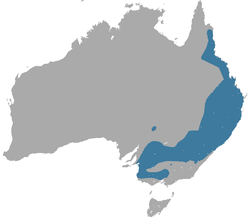 | Size: 4–14 cm (2–6 in) long, plus 4–13 cm (2–5 in) tail [94]
Habitat: Forest, savanna, and shrubland [112]
Diet: Insects, as well as small vertebrates such as lizards and mice [96] | LC
Unknown  [112] [112]
|
|---|
| Sooty dunnart
| S. fuliginosus
(Gould, 1852) | Southwestern Australia
 | Size: 4–14 cm (2–6 in) long, plus 4–13 cm (2–5 in) tail [94]
Habitat: Forest and savanna [96]
Diet: Insects, as well as small vertebrates such as lizards and mice [96] | NE
Unknown 
|
|---|
| Stripe-faced dunnart  | S. macroura
(Gould, 1845) | Australia
 | Size: 7–12 cm (3–5 in) long, plus 5–13 cm (2–5 in) tail [113]
Habitat: Savanna, shrubland, grassland, and desert [114]
Diet: Insects, as well as small vertebrates [113] | LC
Unknown  [114] [114]
|
|---|
| White-footed dunnart  | S. leucopus
(Gray, 1842) | Northern and southern Australia and Tasmania
| Size: 4–14 cm (2–6 in) long, plus 4–13 cm (2–5 in) tail [94]
Habitat: Forest, savanna, shrubland, and grassland
Diet: Insects, as well as small vertebrates such as lizards and mice [96] | LC
8,000–10,000 
|
|---|
| White-tailed dunnart
| S. granulipes
Troughton, 1932 | Southwestern Australia
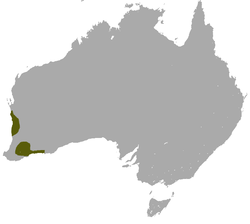 | Size: 4–14 cm (2–6 in) long, plus 4–13 cm (2–5 in) tail [94]
Habitat: Shrubland [116]
Diet: Insects, as well as small vertebrates such as lizards and mice [96] | LC
Unknown  [116] [116]
|
|---|

